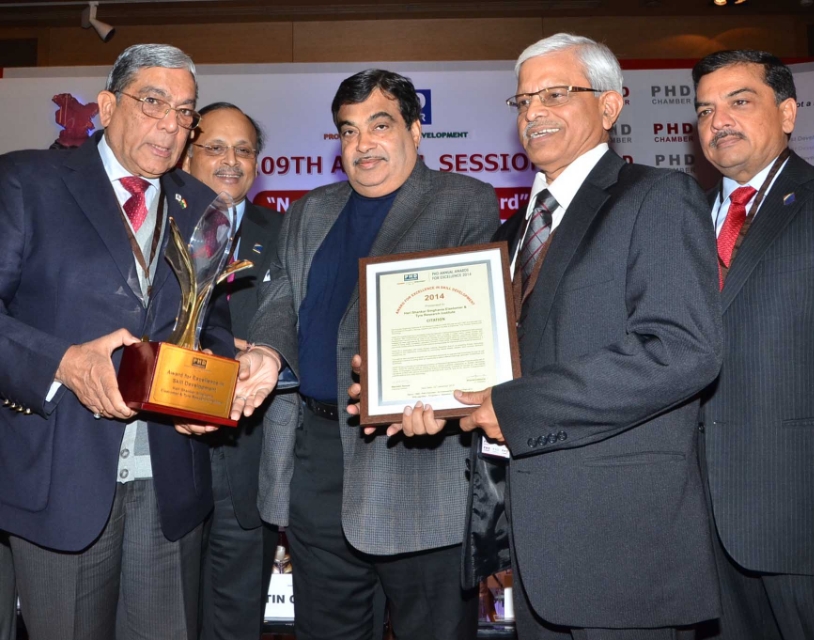Textile
Organic materials such as Polyamide (Nylon 6, Nylon 66), Polyester (PET), Rayon, Aramid and Hybrid cords are often used as body ply and cap ply in tyres used in Car, Truck, Bus and Aircraft.
- Tensile Properties:
Organic materials such as Polyamide (Nylon 6, Nylon 66), Polyester (PET), Rayon, Aramid and Hybrid cords are often used as body ply and cap ply in tyres used in Car, Truck, Bus and Aircraft.
The force-bearing ability of a reinforced rubber product is related to the strength of the yarn or cord used as a reinforcing material, breaking strength is used in engineering calculations when designing various types of textile reinforced rubber products. When needed to compare intrinsic strength characteristics of yarns or cords of different sizes or different types of fibre, breaking tenacity is very useful because, for a given type of fibre, breaking force is approximately proportional to linear density.
Elongation of yarn or cord is taken into consideration in the design and engineering of reinforced rubber products because of its effect on uniformity of the finished product and its dimensional stability during service.
The FASE is used to monitor changes in characteristics of the textile material during the various stages involved in the processing and incorporation of yarn or cord into a rubber product.
Modulus is a measure of the resistance of yarn or cord to extension as a force is applied. It is useful for estimating the response of a textile reinforced structure to the application of varying forces and rates of Stretching. Although modulus may be determined at any specified force, initial modulus is the value most commonly used.
Work-to-break is dependent on the relationship of force to elongation. It is a measure of the ability of a textile structure to absorb mechanical energy. Breaking toughness is work-to-break per unit mass.
Standards:
ASTM D885, ASTM D7269 - Adhesion Properties:
- Single Cord H-Adhesion:
Adhesion of single cord can be tested to evaluate the adhesive properties of the subjective material.
Adhesion test after thermal ageing (both aerobic and anaerobic) can also be done.
Standard:
ASTM D4776 - Peel Adhesion:
Adhesion of calendared cords & chafer are tested by performing the strap peel adhesion test to evaluate the adhesion properties at the interfacial layer between the plies in a composite. Adhesion test after thermal ageing (both aerobic and anaerobic) can also be done.
Standard:
ISO 36, ASTM D4393
- Single Cord H-Adhesion:
- Shrinkage:
Shrinkage plays an important role in Dimensional Stability of tyre, controlling of growth of tyre during running, PCI of bias tyre. Shrinkage also has correlation with Flat spotting phenomenon of Tyres. Thermal Shrinkage is a critical parameter mainly in hygroscopic fibres which affects the final shape and size of the rubber composites. It is one of the acceptance criteria for tyre cords.
Standard:
ASTM D4974
Thermal Shrink force of tyre cord plays a major role in post curing inflation of tyre to maintain its dimension in the case of truck bias tyre and also in selection criteria for cap ply in passenger car radial.
Standard:
ASTM D5591
At HASETRI, we have sophisticated equipment which can give you the live shrinkage graph and shrink force graph for your customized conditions (Temperature, Tension, Time) of testing. - Physical Properties:
- Twist:
Twisting in cord increases rupture energy, elongation at break, fatigue resistance in compression, shrinkage, adhesion with rubber and it decreases cord strength, initial modulus and fatigue resistance in cyclic tension so an optimized twist in tyre cords provides a better fatigue and tensile properties. Twist per metre (TPM) in both cable and ply are evaluated for the tyre cords.
Standard:
ASTM D885 - Linear Density & Moisture Regain:
Denier plays an important role in quality acceptance for commercial shipment. Moisture regain indicates the quality of the material which will be used for further processing. Denier has a correlation with Strength of the cord (More the Denier, more the Strength of cord).Linear density plays a significant role in calculating the expected mass of Pneumatic tyres and other components as a part of process control procedure. It is also a parameter of commercial importance specifically in the case of hygroscopic fibres.
Standard:
ASTM D885 - Gauge:
Thickness/Gauge of organic cord plays a major role in the processing of ply/breaker/chaffer or any other fibre going in as rubber composite. During calendaring, the main control parameter is the thickness of rubber coated fabric sheet.
Standard:
ASTM D885 - Single Cord Stiffness:
Stiffness, load by deflection phenomenon considered as an important parameter for the processing of cords. Single cord stiffness used to evaluate the cords for the processing point of view.
Standard:
HASETRI Internal Standard F1305
- Twist:
- Fatigue Properties:
Fatigue properties for fibres are analysed by strength retention of cords after a vigorous compression and tension cycle for a specific period of time at a specific rpm. Once the cord tensile properties are evaluated then those tested cords are subjected to microscopic studies for analysing the nature of failure.
Standard:
ASTM D6588, HASETRI Developed method. - Creep & Stress Relaxation:


Highlights

HASETRI featured in Indian/International Rubber Journal
An enlightening interview with Dr. R. Mukhopadhyay, Director & CE, HASETRI, speaks of the current situation of the Indian tire and rubber industry and how they are coping with the pandemic.

HASETRI successfully enhanced the scope of NABL accreditation
September 2021: HASETRI has successfully enhanced the scope of NABL accreditation in Wet Grip and Coast by Noise testing for Cl & C2 category tyres as per ECE R117 and proposed AIS 142.

PHD Annual Awards for Excellence Announced
HASETRI imparted training to candidates under the STAR scheme of NSDC,GOI in rubber sector(under Rubber SDC)for the job roles of mill & Tyre Building Operator-commercial vehicles. The Institute has been approved as the first training provider for rubber sector by RSDC under NSDC,GOI


